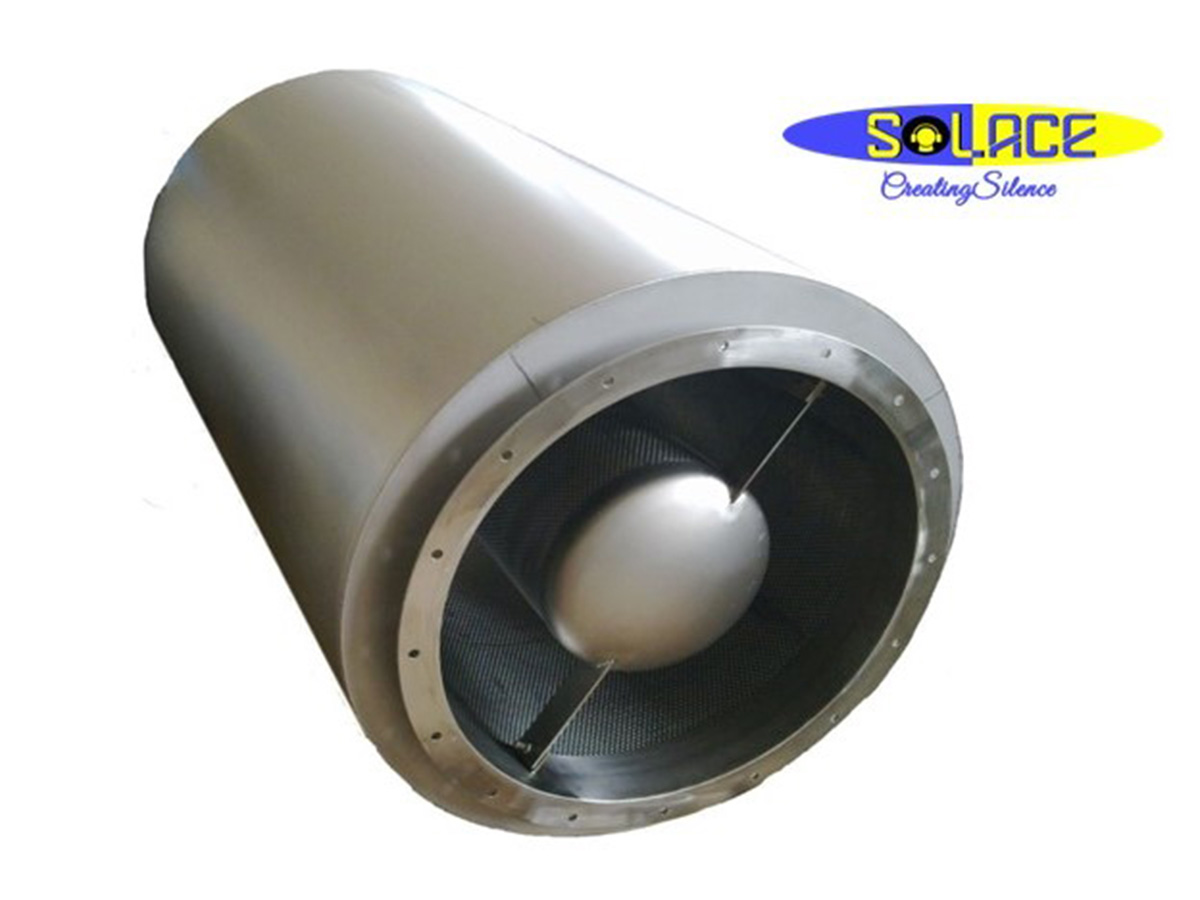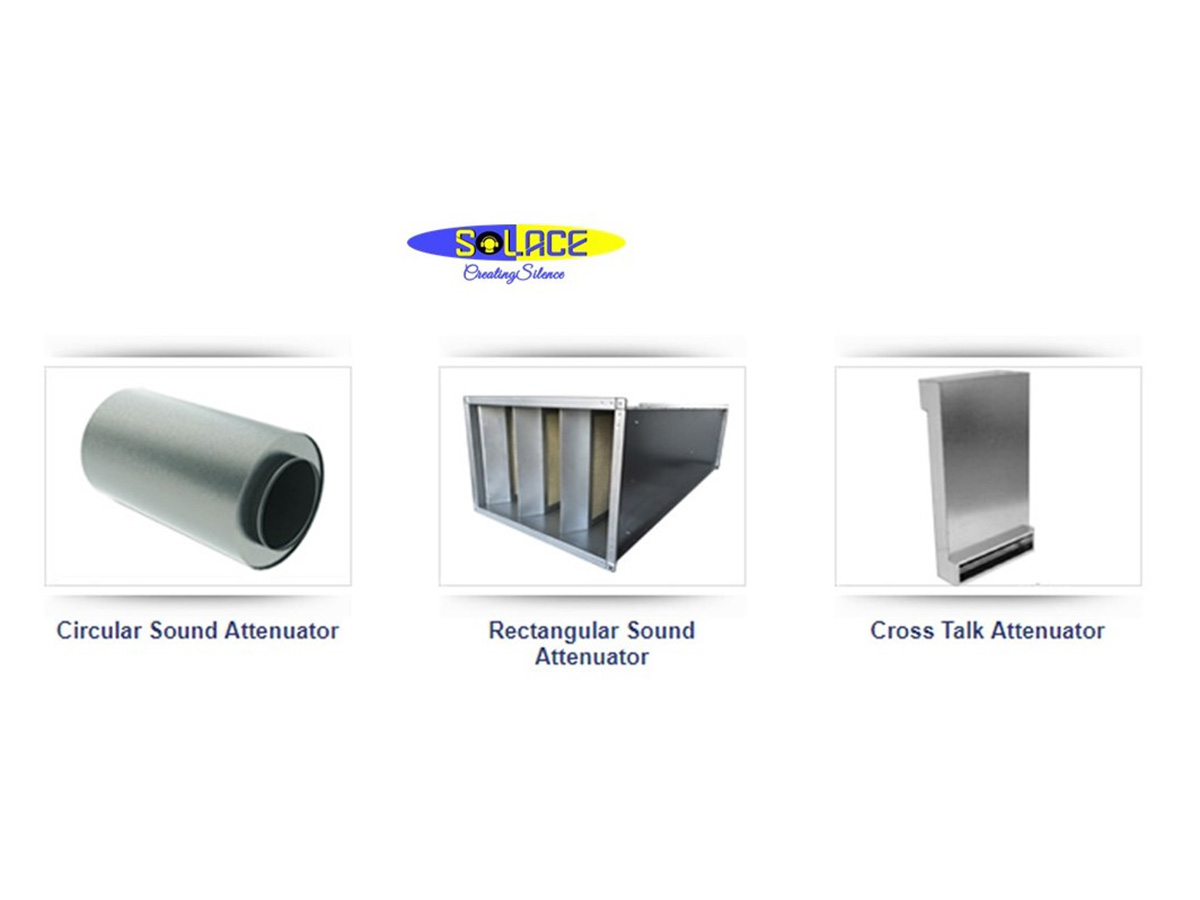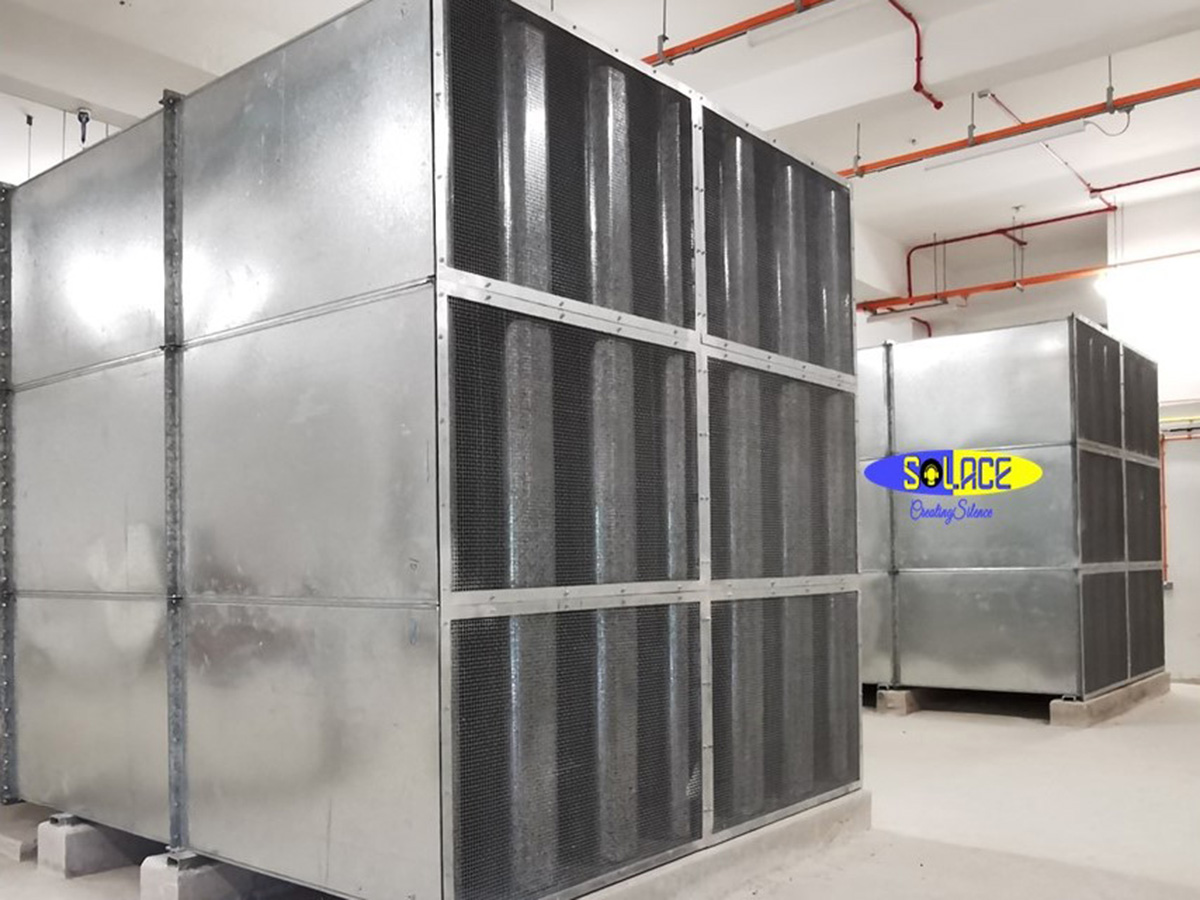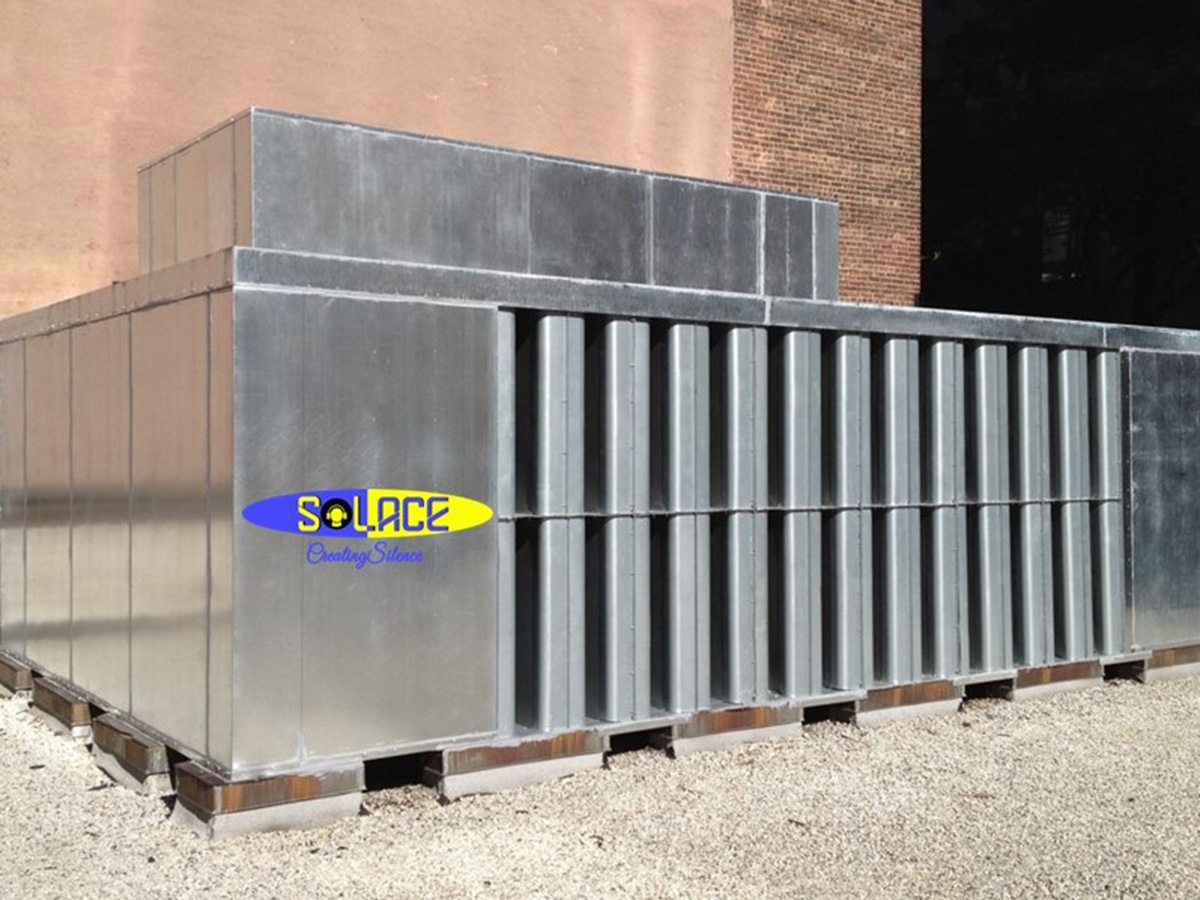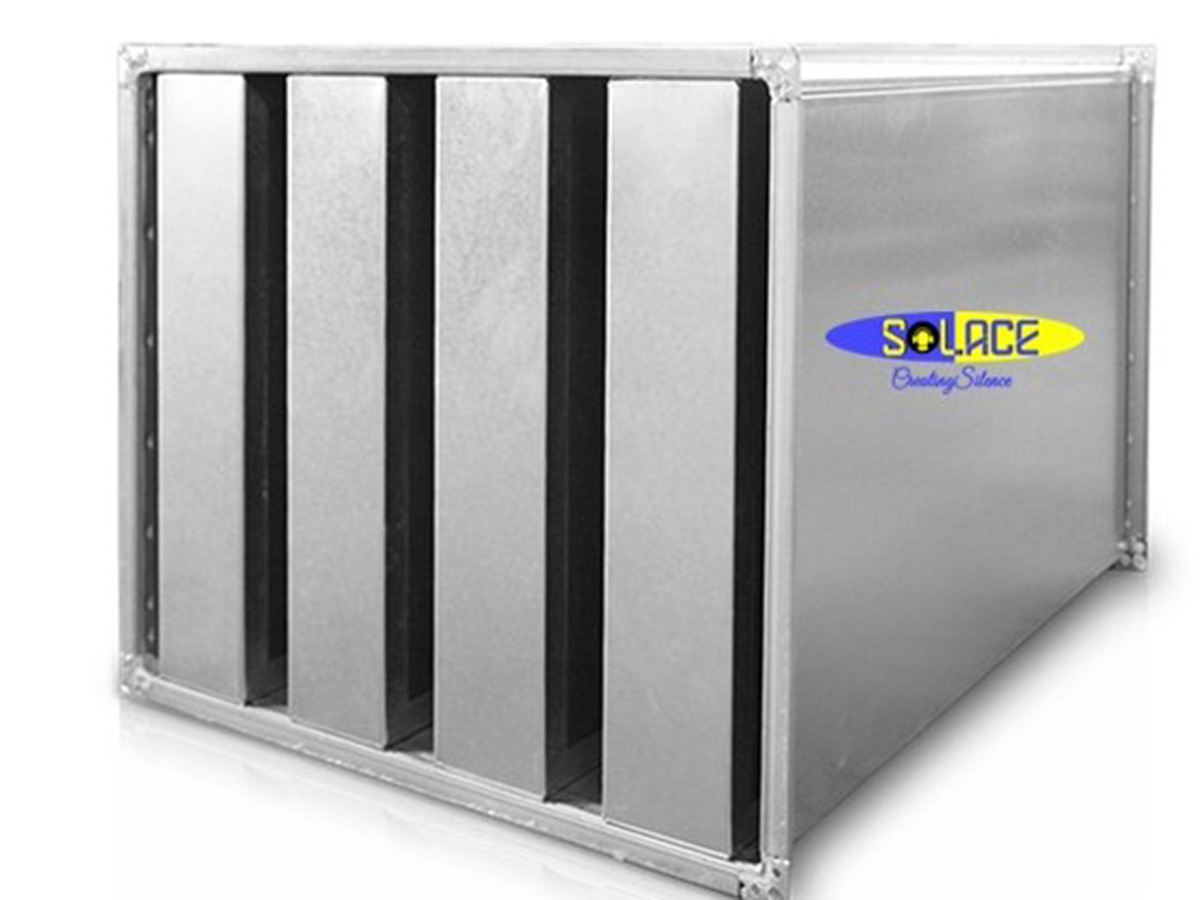A sound attenuator, also known as a silencer or a sound dampener, is a device used to reduce or control the level of noise or sound transmission in various applications. It is commonly used in HVAC (Heating, Ventilation, and Air Conditioning) systems, industrial facilities, and other environments where noise reduction is required.
The primary function of a sound attenuator is to reduce the noise generated by airflow within ductwork or ventilation systems. These systems often produce noise due to the movement of air and the turbulence created as it passes through the ducts and fittings.
Sound attenuators are designed to minimize this noise by using various techniques, such as absorption, reflection, and diffusion. They are typically constructed using sound-absorbing materials, such as mineral wool or foam, enclosed within a rigid or flexible casing. The casing may include internal baffles or chambers to enhance sound reduction.
When sound waves pass through a sound attenuator, the sound energy is absorbed or reflected, reducing its intensity. The design of the attenuator determines its sound reduction capabilities, which are usually specified in terms of insertion loss or sound reduction index (SRI). The insertion loss represents the difference in sound level before and after passing through the attenuator.
There are different types of sound attenuators available, including:
- Rectangular Attenuators:These are rectangular-shaped units that can be installed in rectangular ductwork systems.
- Circular Attenuators: Designed for circular ducts, these attenuators have a cylindrical or conical shape.
- Cross-Talk Attenuators: These attenuators are specifically designed to reduce sound transmission between interconnected duct systems or rooms.
- Dissipative Attenuators: They use sound-absorbing materials to convert sound energy into heat, effectively reducing noise levels.
- Reactive Attenuators:These attenuators use reflection and interference to cancel out specific sound frequencies.
- Lighting:The booth is equipped with appropriate lighting to facilitate visual communication between the test administrator and the individual being tested.
The selection of a sound attenuator depends on factors such as the required noise reduction, airflow rates, space limitations, and specific application requirements. It is essential to consult with an HVAC engineer or acoustics specialist to determine the appropriate attenuator type and specifications for a particular project.

